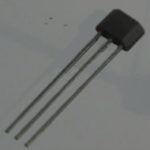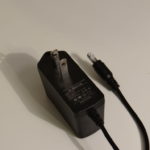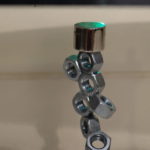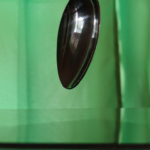
This is a project that will amaze and inspire! What good is all of that science know-how if we can’t do something cool with it, right?
With this project we are going to use a couple of components that are easy to make or find to build a jaw dropping, mind bending Electromagnetic Levitator, or EMLEV as I call it.
With the help of some simple circuitry, a magnet and a few other components you will be able to levitate objects in mid air!
Let’s get started!
What You’ll Need










For this project we will need a controller circuit, a power source, an EM coil and a magnet along with the hardware and tools to put it all together.
The parts list is as follows:
Circuit Board
EMLEV™ Kit
$144.00+s&h
Order Now
(1) Small Circuit Board
(1) LM7805 Voltage Regulator
(1) MIC502 IC
(1) LMD18201 IC
(1) SS495 A Hall Effect Sensor
(1) 470uF Capacitor (electrolytic)
(1) 1uF Capacitor (ceramic)
(1) 0.1uF Capacitor (ceramic)
(1) 0.01uF Capacitor (ceramic)
(1) 2 Slot Input Jack (+/-)
(2) 2 Wire Connectors
(1) 12v/1a Power Supply
(1) LCD Voltage Display (optional)
(1) Green LED (optional)
(1) 10K Resistor
Solenoid
(20g 150-300 turns)
(1) Steel Bolt
Various Colored Wire (18-24g)
(2-3) Neodymium Disc Magnets
(3) 8″x10″ Plexiglass Sheets
(4) 12″ x 5/15″ Threaded Rod
(24) 5/16″ Nuts
(24) 5/16″ Washers
(8) 5/16″ Rubber Caps (optional)
Tools shown include soldering iron and solder, drill and bits up to 5/16″ and you’ll also want to have some electrical tape or shrink wrap, glue and 5/16th wrench on hand.
EMLEV™ Kit
$144.00+s&h
Order Now
Theory and Core Components




Why can’t we just levitate metal objects with a magnet at the right distance? Because, as a ferrous material nears a magnetic field, the force increases exponentially. This is described by what is called the magnetic inverse square law which states:
A propagating magnetic field can be shown in 2D diagrams or on magnetic viewing film as lines of force emanating from the poles. Even on an oscilloscope it is impossible to tell much about the movement and direction of the field with only snapshots in two dimensions (like this notorious illusion). When observed in 3D this field can be seen and felt to be toroidal and in respect to time we begin to see that a propagating helical field emerges. This is the same in the case of an electromagnet, and when the field collapses it does so in the opposite direction. This is described by what is usually referred to as Flemings Right and Left Hand Rules.
So, in theory, it would be possible to create alternating vortices/helices in order to adjust an object to a desired position. After doing some calculations based on the formula above we find that it is only possible by alternating these fields precisely and quickly (50,000 times per second or more!)
Problem? Not at all. With a few components we can create a propagating and collapsing electromagnetic field controlled by a sensor which detects the field strength and a circuit which applies the appropriate field to an electromagnet. All of which can be found here to make this project fast and easy.
Now that we have all of our components ready, let’s get started!
Build the Enclosure


Building our enclosure is quite straight forward with the recommended materials but feel free to use whatever you’ve got lying around. When complete, the enclosure should be 8″Wx10″Dx12″H.
First, we will stack and secure our plexiglass and measure and drill four holes near the corners being sure to leave space from the edges and drill with incrementally larger bits to avoid cracking. When complete we will have four 5/16th inch holes in the corners of all three plexiglass sheets. *Be sure to note the orientation for a symmetrical fit.
Next, we will drill a hole or holes for our input jack on one of the sheets. This may vary depending on your jack but should be near the rear of the enclosure.
We will now begin building the enclosure. Start by inserting the four 5/16″ threaded rods into the holes of one of your sheets. Secure the sheet about 1.5-2 inches from the bottom of the rods with one washer and nut on each side of the plexiglass and add a rubber foot on the bottom of each rod. Make sure everything is level before continuing.
Next, we will add a nut and washer about 3-4inches from the top of our rods and place the sheet with the hole for the jack on top.
The last step to our enclosure will be securing the last sheet of plexiglass to the top once we add the components in the next step.
Mount and Secure Components




Now that we have a platform, we can build and install our components.
This relatively simple circuit and solenoid pair can be built according to the attached diagram or you can get a pre-built one here. Note that the SS495 gets mounted to the bottom of the coil. Adding an LED allows you to verify power and a digital voltmeter allows you to detect a load for tuning purposes, both optional, they can be wired directly to the circuit’s 12v input with an in-line 10k resistor on the hot lead (+). It’s fun to know that one of the circuit’s ICs is designed for a motor controller and the other is meant for a fan, but put them together with a few other components and we can use it to levitate objects in mid air!
We can then wire the jack to the circuit’s input noting the circuit diagram and remember that the jack’s case is the ground (-).
Next, we will connect Outputs 1 and 2 from our LMD18201 IC to our solenoid coil. Insert a steel bolt into the coil’s center and to the head of the bolt mount the SS495 A Hall Effect Sensor to which we will connect our leads according to the diagram. Pre-built components will include connectors that can just be snapped together.
It may be helpful at this point to secure everything temporarily, carefully connect power and test the solenoid’s field with your magnet.
Once satisfied, you may secure your components to the platform. The circuit should be upright to allow airflow and near the jack, the solenoid should be centered with the side with the sensor facing down and the optional LED and LCD can be placed wherever is convenient. Adding some shrink wrap and wire covers at this point makes everything neat and helps avoid short circuits and tugged wires.
Lastly, to further secure and cover everything we will add our final plexiglass sheet. First add a nut and washer to each rod, then the last plexiglass sheet and adjust it down so that the top sheet makes contact with your solenoid, tightly holding it in place. Once in place and level, add four more washers and nuts and cap with your rubber end caps.
Your EMLEV is Complete! Time to Tune and Test.





We’re almost complete; but we’ll need to do a few calculations and a little tuning before we can start wowing friends and colleagues.
When mounting our solenoid, our orientation did not take polarity into consideration. Therefore, we will need to select the correct pole of our magnet to face our coil. To do this, connect power and begin bringing the magnet into the solenoid’s field. One side of the magnet will attract continuously, the other will have a tendency to lock in place several inches from our coil, make a note of this side of the magnet. Be careful not to get too close; both poles will attract violently if brought too near to the energized coil.
Now that we know which pole of our magnet we are using, we will now determine the weight which it can hold. Too little weight and the load will attract without levitating, too much weight and the magnetic field will not be able to overcome gravity and your object will fall. You can use random trial and error to find the optimal weight by attaching random objects to your magnet, however I suggest an approach which leads to more quantified results. Using small nuts and bolts, incrementally add them to your magnet and test. Once you find a balance point (you’ll feel a slight click as it locks into place), note the weight of the load using a small scale. Then add or remove small amounts of weight to find your range and optimize for stability. You can then use this as a reference and start levitating anything within this weight range which is usually between 45-55 grams not including the magnet.
When functioning correctly, connect an oscilloscope to see the fields in action!
Prepare to Inspire and Amaze!






Congratulations! You have made the impossible possible!
Your EMLEV should now be complete, functioning and will levitate any item in the determined weight range. Now we can choose an object to levitate. Try mounting the magnet to a stone or attach nails or nuts, attach a keepsake, the possibilities are endless, these guys even levitated a live frog!
I chose a large tablespoon for effect.
Instead, only try to realize the truth.
There is no spoon.”
– para. The Matrix (1999)
EMLEV™ Kit
$144.00+s&h
Order Now


τα at 11:06 pm, July 14, 2018 -
Touche. Outstanding arguments. Keep up the good work.
Comments are closed.